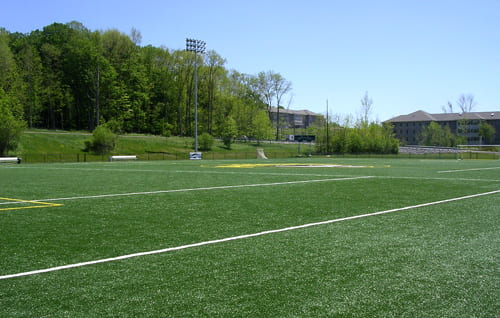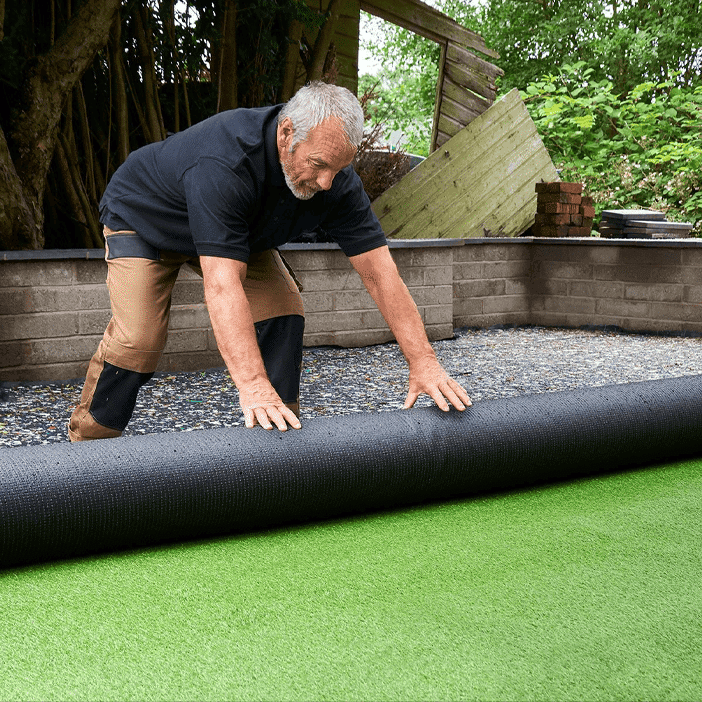Premium Arizona Turf Solutions for a Attractive and Lush Landscape
Premium Arizona Turf Solutions for a Attractive and Lush Landscape
Blog Article
Explore the Environmental Advantages of Opting for Artificial Grass Solutions
The fostering of artificial grass options offers a compelling possibility to address pressing environmental challenges. By significantly decreasing water use and lessening the application of harmful chemicals, these choices not only promote sustainable landscaping but additionally protect local environments.
Water Preservation Advantages
One of the most substantial benefits of artificial turf is its ability to conserve water. Standard yard yards require substantial watering, especially in areas vulnerable to dry spell or water limitations. On the other hand, synthetic grass does not require watering, significantly reducing the general need for water sources. This feature is especially valuable in deserts where water shortage is a pushing problem.
By eliminating the requirement for regular watering, synthetic grass contributes to sustainable landscape techniques and assists mitigate the ecological influence of excessive water intake. The conservation of water expands to the reduction of overflow, which can lead to dirt erosion and waterway air pollution.
Additionally, the setup of fabricated lawn permits property owners and communities to designate water resources much more successfully, concentrating on important usages such as alcohol consumption water and agriculture. The shift towards man-made turf not only promotes accountable water usage yet also lines up with wider ecological objectives intended at maintaining natural deposits.
As neighborhoods increasingly focus on sustainability, the water preservation benefits of synthetic grass present a compelling case for its adoption in residential and commercial landscaping projects.
Reduced Chemical Usage
The shift to synthetic grass considerably reduces the dependence on chemical treatments typically used in natural grass maintenance. Traditional lawn monitoring commonly involves the application of herbicides, fertilizers, and pesticides to advertise growth and control parasites. These chemicals can present risks to human wellness, neighborhood wild animals, and the environment, adding to dirt and water contamination.
On the other hand, synthetic grass eliminates the requirement for these unsafe materials. Once set up, it requires marginal maintenance, mainly containing normal cleaning and infrequent infill replenishment. This decrease in chemical usage not only benefits the instant environment however also adds to wider environmental security. By minimizing the launch of artificial compounds right into the environment, synthetic lawn promotes healthier dirt and water systems.
In addition, the absence of chemical drainage related to man-made lawn installations assists safeguard neighborhood rivers from pollution, supporting marine life and maintaining biodiversity. Arizona artificial turf. As communities progressively focus on lasting practices, selecting synthetic grass presents a sensible solution that aligns with environmental conservation goals. Via this change, homeowner can enjoy lush eco-friendly rooms without endangering eco-friendly wellness, leading the way for a more sustainable future
Lower Carbon Footprint

Moreover, the installment of synthetic grass can cause significant water preservation. Natural lawns need substantial quantities of water for watering, which not just contributes to the carbon footprint related to water extraction and treatment however likewise strains neighborhood water sources. In comparison, synthetic grass needs very little maintenance, needing no watering, therefore significantly reducing water usage and its associated energy expenses.
Furthermore, the durability of synthetic turf adds to its decreased carbon effect. With a life expectancy of as much as 15 years or more, the need for frequent substitutes is diminished, resulting in less waste and reduced power intake in production and getting rid of typical lawn options. In general, synthetic grass presents a lasting choice for ecologically conscious landscape design.
Habitat Conservation
Habitat preservation is an essential factor to consider in the dispute over landscape design choices, specifically when comparing synthetic grass to natural lawn. All-natural yard lawns usually need comprehensive upkeep, including making use of fertilizers, chemicals, and herbicides, which can negatively affect local environments. These chemicals can leach right into the dirt and waterways, hurting native plants and fauna and interrupting local environments.
In comparison, artificial turf provides an opportunity to reduce the right here eco-friendly footprint of landscaping. By selecting synthetic yard, house owners can minimize the interruption of all-natural environments connected with traditional yard treatment practices. Synthetic lawn gets rid of the demand for harmful chemicals, consequently shielding nearby wild animals and maintaining the integrity of bordering ecological communities. Moreover, the setup of synthetic grass can bring about the conversion of previous lawn areas right into more biodiverse landscapes, such as pollinator gardens or indigenous plant locations, which can sustain neighborhood wild animals.
Ultimately, the transition to fabricated grass not only conserves water and reduces upkeep efforts but additionally cultivates a much more unified connection in between human activities and the all-natural environment, promoting habitat conservation while doing so.
Long-Term Sustainability
Long-lasting sustainability is a vital aspect in assessing the advantages of artificial turf over traditional yard yards. One of one of the most substantial advantages of man-made turf is its durability; it can last approximately 15-20 years with very little upkeep, whereas natural yard needs constant reseeding and replacement. This durability decreases the demand for continuous sources, such as water, fertilizers, and pesticides, which are essential for keeping a healthy yard lawn.
In addition, synthetic grass adds to a reduction in carbon exhausts related to yard treatment equipment. Standard lawns commonly require gas-powered lawn mowers, trimmers, and blowers, all of which add to air pollution. Arizona turf. On the other hand, fabricated turf gets rid of the need for such tools, promoting a cleaner atmosphere
Additionally, the production of synthetic grass significantly utilizes recycled materials, boosting its sustainability account. As producers take on environment-friendly techniques, the environmental footprint of man-made turf remains to reduce.

Verdict
The adoption of synthetic grass services offers considerable environmental benefits, including significant water conservation, reduced dependence on damaging chemicals, and a reduced carbon footprint. Man-made turf aids in maintaining natural habitats by reducing land disruption and promoting long-lasting sustainability with the usage of durable products. Jointly, these aspects underscore the capacity of synthetic grass to add favorably to environmental wellness and offer a feasible choice to traditional landscaping techniques in an increasingly resource-conscious world.
In comparison, fabricated turf does not require watering, significantly decreasing the general need for water sources. By minimizing the release of artificial substances right into the ecosystem, artificial turf advertises much healthier dirt and water systems.
In addition, the installation of artificial grass can result in significant water preservation. In comparison, fabricated lawn requires marginal maintenance, requiring no watering, thus considerably decreasing water usage and its connected power expenses.

Report this page